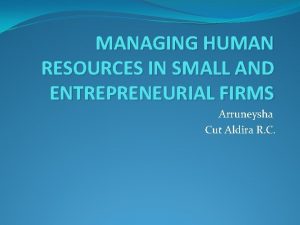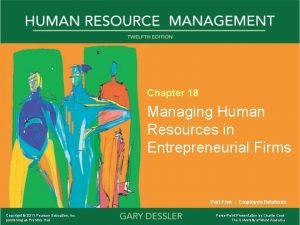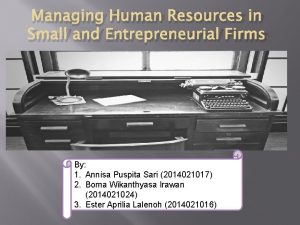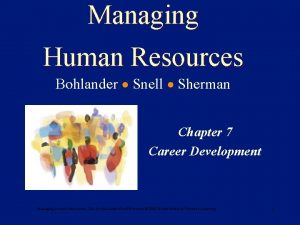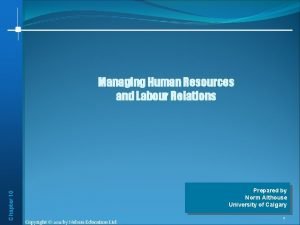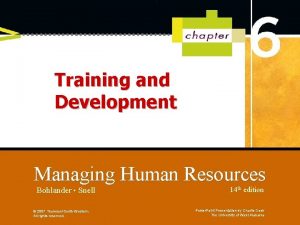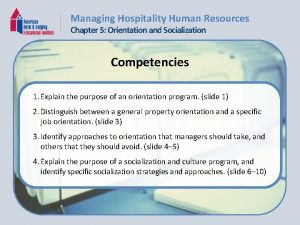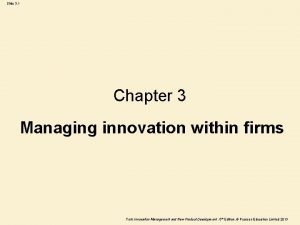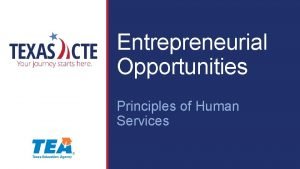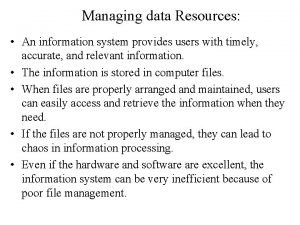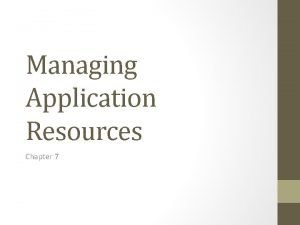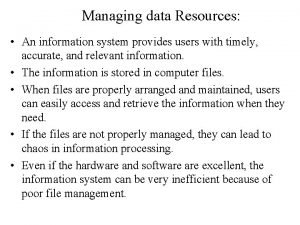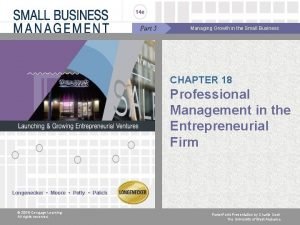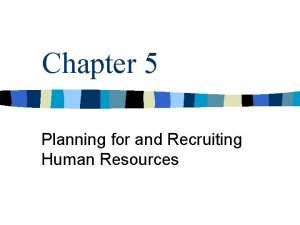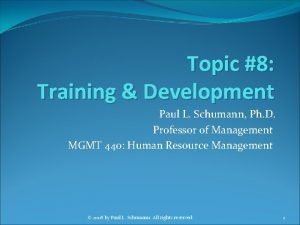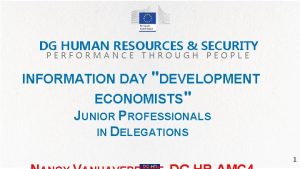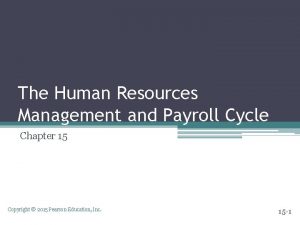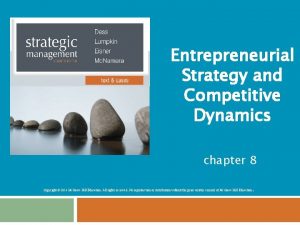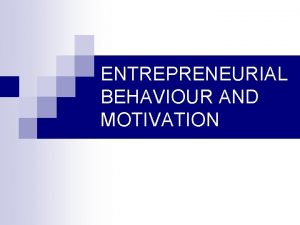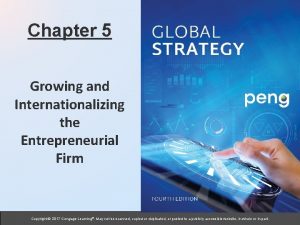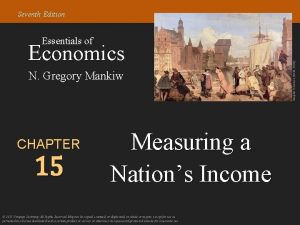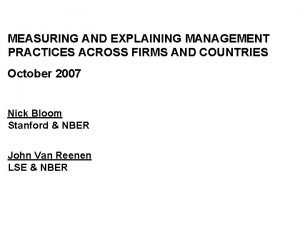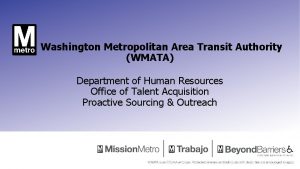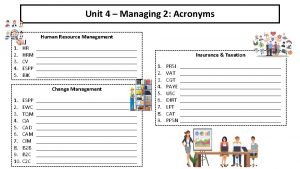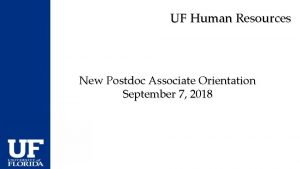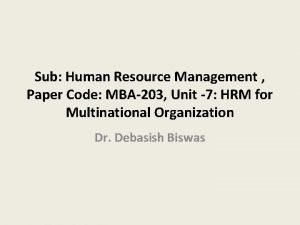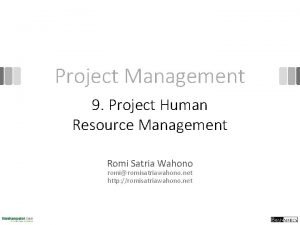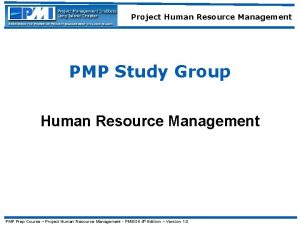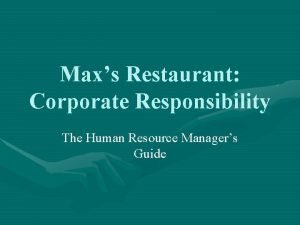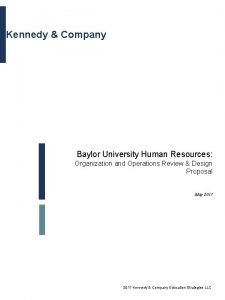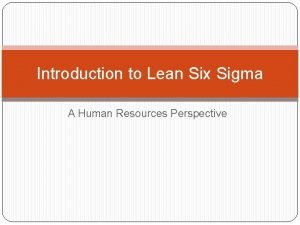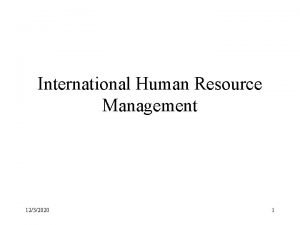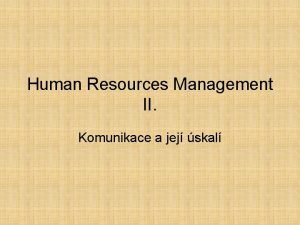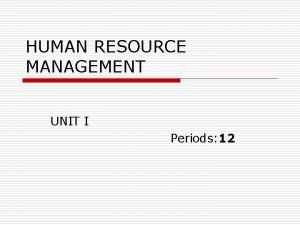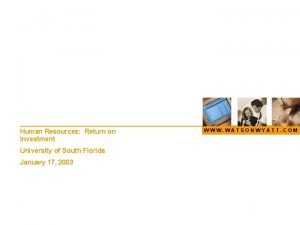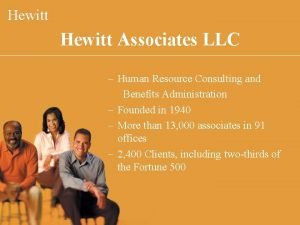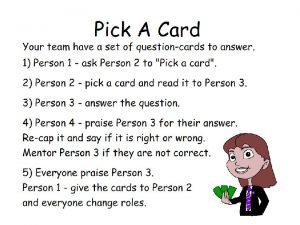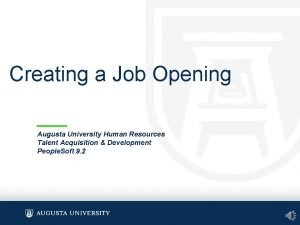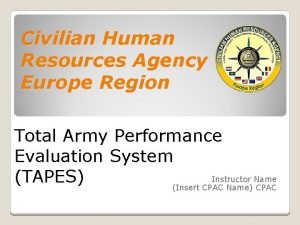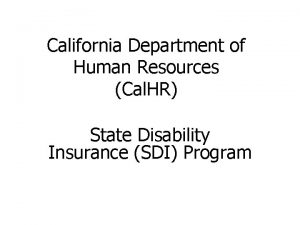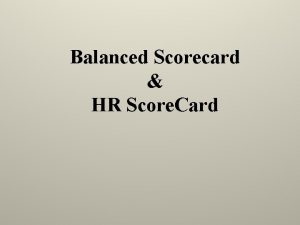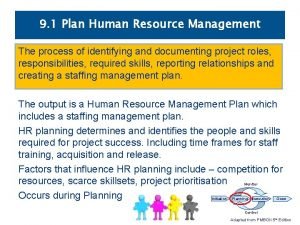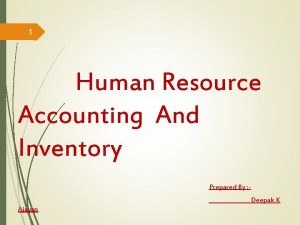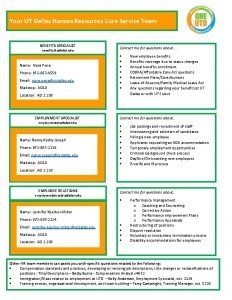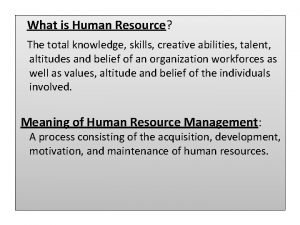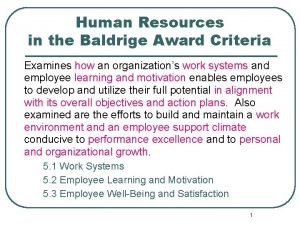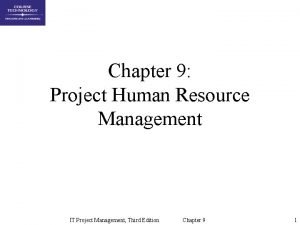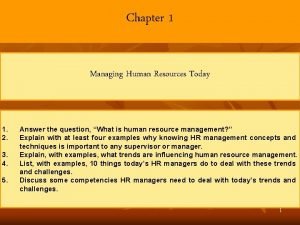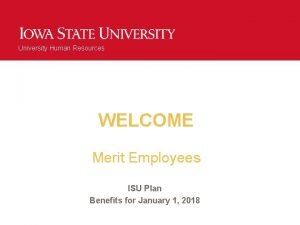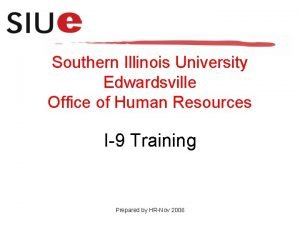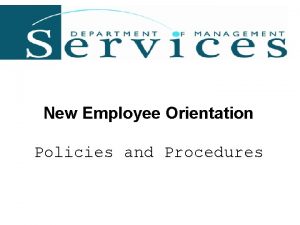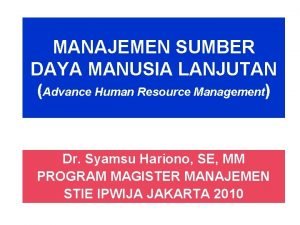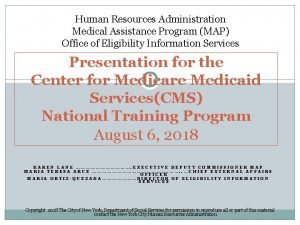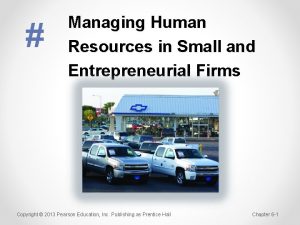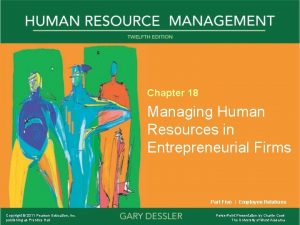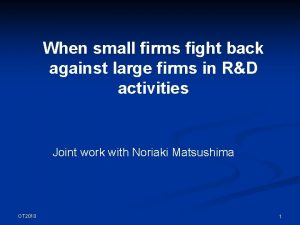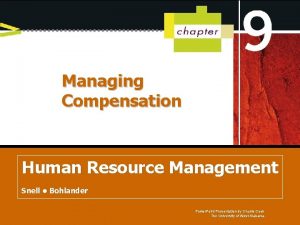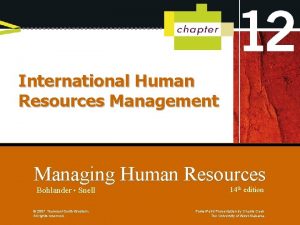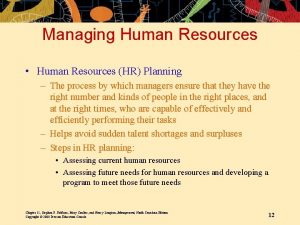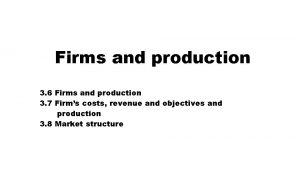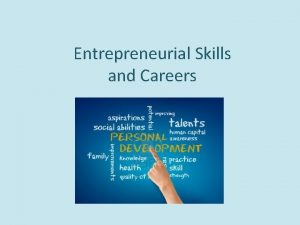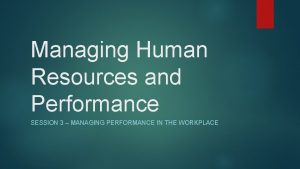Managing Human Resources in Small and Entrepreneurial Firms






















































































![The Assignment: • You are required to reflect on your learning [about HRM] from The Assignment: • You are required to reflect on your learning [about HRM] from](https://slidetodoc.com/presentation_image_h2/4ae1d1f63598a837089ad757c7fe6b2d/image-87.jpg)





- Slides: 92

Managing Human Resources in Small and Entrepreneurial Firms Copyright © 2013 Pearson Education, Inc. Publishing as Prentice Hall Chapter 6 -1

Citing from a web site • • • Use the following template to cite a website using the Harvard citation style. Key: Pink text = information that you will need to find from the source. Black text = text required by the Harvard style. Reference list Place this part in your bibliography or reference list at the end of your assignment. Template: Author Surname, Author Initial. (Year Published). Title. [online] Available at: http: //Website URL [Accessed Date Accessed]. Example: Tester, J. (2014). EZproxy. [online] Eds. a. ebscohost. com. ezproxy. liv. ac. uk. Available at: http: //eds. a. ebscohost. com. ezproxy. liv. ac. uk/eds/detail? sid=fa 9392 f 5 -3794 -4 dd 7 -a 8 bc 0 f 2 d 5915 a 373%40 sessionmgr 4005&vid=4&hid=4110&bdata=Jn. Npd. GU 9 ZWRz. L Wxpdm. Umc 2 Nvc. GU 9 c 2 l 0 ZQ%3 d%3 d#db=bth&AN=67324416 [Accessed 21 Jun. 2014]. Copyright © 2013 Pearson Education, Inc. Publishing as Prentice Hall Chapter 18 -2

In-text citation • Place this part right after the quote or reference to the source in your assignment. • Template • (Author Surname, Year Published) • Example • income statement has several indicators (canaries) that will telegraph early warning signs well before the company starts to lose money or the bank balance starts to drop precariously low. (Tester, 2014) Copyright © 2013 Pearson Education, Inc. Publishing as Prentice Hall Chapter 18 -3

Small Businesses • Many people work for small businesses or create their own new small businesses, and such businesses have special human resource management needs. Copyright © 2013 Pearson Education, Inc. Publishing as Prentice Hall Chapter 18 -4

Small Business HR • The main purpose of this lecture is to help you apply what you know about human resource management to running a small business. The main topics we’ll address in this session include: • the small business challenge, • using Internet and government tools to support the HR effort, • leveraging small size with familiarity, flexibility, fairness, and informality, • using professional employer organizations, and • managing HR systems, procedures, and paperwork. Copyright © 2013 Pearson Education, Inc. Publishing as Prentice Hall Chapter 18 -5

Learning Objectives 1. Explain why HRM is important to small businesses and how small business HRM is different from that in large businesses. 2. Give four examples of how entrepreneurs can use Internet and government tools to support the HR effort. Copyright © 2013 Pearson Education, Inc. Publishing as Prentice Hall Chapter 18 -6

Learning Objectives 3. List five ways entrepreneurs can use their small size to improve their HR processes. 4. Discuss how you would choose and deal with a professional employee organization. 5. Describe how you would create a startup human resource system for a new small business. Copyright © 2013 Pearson Education, Inc. Publishing as Prentice Hall Chapter 18 -7

Why HRM is Important to Small Businesses and How Small Business HRM is Different from that in Large Businesses Copyright © 2013 Pearson Education, Inc. Publishing as Prentice Hall Chapter 18 -8

USA situation • More than half the people working in the United Sates—about 68 million out of 118 million workers—work for small firms. • Small businesses as a group account for most of the 600, 000 or so new businesses created every year, as well as for most business growth. Copyright © 2013 Pearson Education, Inc. Publishing as Prentice Hall Chapter 18 -9

Small Business in China • Small companies are booming in China. , simple changes in government regulations that took effect in March of last year[2014] have led to a huge surge of new businesses. • In the six months following the new rules, which cut red tape and sharply lowered the amount of up-front money needed to get going, more than 1. 76 million companies registered for business, an increase of 68 percent over the previous year. Copyright © 2013 Pearson Education, Inc. Publishing as Prentice Hall Chapter 18 -10

New companies • Many of the new companies, says Beijing lawyer Jerome Beaugrand-Champagne, had been operating in a gray area, doing business on Taobao, the consumer-to-consumer market platform run by Internet leader Alibaba. • Once these new businesses are registered, “the government can now regulate and, more important, tax these enterprises, ” he says. The companies can also gain access to more avenues for finance as they grow and reduce the risk of running foul of officialdom. Copyright © 2013 Pearson Education, Inc. Publishing as Prentice Hall Chapter 18 -11

Potential ? • Jingdong, one of China’s largest online retailers, and part-owner Internet giant Tencent recently invested around $20 million in a small company eg Picooc. • The hope is that big players like these will help take small businesses and transform them into recognizable brands, much the way Facebook and Google buy smaller companies to take advantage of their growth potential. • Along the way, they can make millions for the original investors. Copyright © 2013 Pearson Education, Inc. Publishing as Prentice Hall Chapter 18 -12

Growth • Still, with a middle class estimated to be 300 million strong and growing, the potential market is gigantic, and that helps to create confidence. • Beaugrand-Champagne says the Chinese people are “much more entrepreneurial than their Western counterparts. ” • Whether or not that’s true, they now have an opportunity to show their stuff as never before. Copyright © 2013 Pearson Education, Inc. Publishing as Prentice Hall Chapter 18 -13

The Small Business Challenge • How small business HRM is different o Size o Priorities o Informality o The entrepreneur o Implications • Why HRM is important to small businesses Copyright © 2013 Pearson Education, Inc. Publishing as Prentice Hall Chapter 18 -14

HR IN SMALL BUSINESSES Managing human resources in small firms is different for four main reasons: size, priorities, informality, and the nature of the entrepreneur. Size The general guideline is that it’s not until a company reaches the 100 -employee milestone that it can afford a human resource specialist. However, even five- to six-employee organizations must recruit, select, train, compensate, and retain qualified staff. Priorities It is not just size but the realities of the entrepreneur’s situation that drive them to focus their time on non-HR issues. Entrepreneurs must wear many hats and be able to change them quickly. Their focus is on helping the business achieve its growth and productivity goals leaving little time for personnel matters. Copyright © 2013 Pearson Education, Inc. Publishing as Prentice Hall Chapter 18 -15

Informality Human resources management activities tend to be more informal in smaller firms. Entrepreneurs must be able to react quickly to changes in competitive conditions. The Entrepreneurs are people who create businesses under risky conditions, and starting new businesses from scratch is always risky. Entrepreneurs, therefore, need to be highly dedicated and visionary. Copyright © 2013 Pearson Education, Inc. Publishing as Prentice Hall Chapter 18 -16

Implications The differences we have listed result in potential implications. 1. Owners may be at a competitive disadvantage due to having rudimentary HR practices. 2. There is no specialized HR expertise on board. 3. Workplace litigation may be around the next corner but the owners may not realize it. 4. Compensation regulations and laws may not be adequately addressed (if at all). 5. Duplication and paperwork leads to inefficiencies and data entry errors. For small businesses, employee data often appears on multiple HR Copyright © 2013 Pearson Education, Inc. Publishing as Prentice Hall Chapter 18 -17

Entrepreneurs need all the advantages they can get, and for them, effective human resource management is a competitive necessity. Small firms with effective HR practices perform better than those with less effective practices. Copyright © 2013 Pearson Education, Inc. Publishing as Prentice Hall Chapter 18 -18

Advantages of Size • So far, we have covered the advantages of size of a firm in that small businesses does not necessarily need HR expertise until it reaches the critical mass of about 100 employees. Copyright © 2013 Pearson Education, Inc. Publishing as Prentice Hall Chapter 18 -19

Small firm • Nonetheless, the small firm still needs to recruit, hire, train, compensate, supervise, and train qualified employees. • Such a firm also needs an awareness of basic issues of fairness in terms of compensation, equal opportunity employment, and other compliance issues. Copyright © 2013 Pearson Education, Inc. Publishing as Prentice Hall Chapter 18 -20

HR LIMITATIONS • Entrepreneurs are generally focused on running their business leaving little time for HR-related activities. However, size makes a difference in that small businesses can be more athletic in their business dealings as well as attending to their HR needs. • While small businesses can perform productively and move quickly on competitive issues, HR needs and requirements must receive attention. Copyright © 2013 Pearson Education, Inc. Publishing as Prentice Hall Chapter 18 -21

HRM • No small business owner needs to cede the advantage to big competitors when it comes to human resource management. • One can level the terrain by using Internet-based HR resources, including the free resources of the U. S. government. • How can small firms do this? Copyright © 2013 Pearson Education, Inc. Publishing as Prentice Hall Chapter 18 -22

Using Internet and Government Tools to Support the HR Effort • Complying with employment laws o DOL o EEOC o OSHA • Employment planning and recruiting o Web-based recruiting Copyright © 2013 Pearson Education, Inc. Publishing as Prentice Hall Chapter 18 -23

TIME • Small business owners spend much of their time tackling issues related to employment laws. • These owners can quickly find the answers to many such questions online at federal agencies’ Web sites Copyright © 2013 Pearson Education, Inc. Publishing as Prentice Hall Chapter 18 -24

Support 1. The U. S. Department of Labor’s First Step Employment Law Advisor (www. DOL. gov) helps small employers determine which laws apply to their business. 2. The U. S. Equal Employment Opportunity Commission (www. EEOC. gov) guides small employers on all laws pertaining to employment discrimination. 3. The DOL’s Occupational Safety and Health Administration site (www. OSHA. gov) supplies guidance for small business owners. Copyright © 2013 Pearson Education, Inc. Publishing as Prentice Hall Chapter 18 -25

INTERNET • Internet resources can make small business owners almost as effective as their large competitors at writing job descriptions and building applicant pools. • Small business owners can use the online recruiting tools to post positions or popular Internet job boards. Copyright © 2013 Pearson Education, Inc. Publishing as Prentice Hall Chapter 18 -26

Using Internet and Government Tools to Support the HR Effort • Selection o Complying with the law • Training o Private vendors o The SBA and NAM • Appraisal and compensation • Safety and health Copyright © 2013 Pearson Education, Inc. Publishing as Prentice Hall Chapter 18 -27

Small Businesses • For the small business, one or two hiring mistakes could wreak havoc. • Some tests are so easy to use they are particularly good for smaller firms. • One example of such a test is the Predictive Index, which measures work-related personality traits, drives, and behaviors. • Copyright © 2013 Pearson Education, Inc. Publishing as Prentice Hall Chapter 18 -28

Internet training Although small companies can’t compete with the training resources of larger organizations, Internet training can provide, at a relatively low cost, the kinds of professional employee training that was formerly beyond most small employers’ reach. There are hundreds (perhaps thousands) of private vendors that may be used. Copyright © 2013 Pearson Education, Inc. Publishing as Prentice Hall Chapter 18 -29

Small Business • The federal government’s Small Business Administration provides a virtual campus that offers online courses, workshops, publications, and learning tools aimed toward supporting entrepreneurs. • The National Association of Manufacturers (NAM) is the largest industrial organization in the United States. • NAM’s Virtual University helps employees maintain and upgrade their work skills and continue their professional development. Copyright © 2013 Pearson Education, Inc. Publishing as Prentice Hall Chapter 18 -30

Computerised services Even small employers now have easy access to computerized and online appraisal and compensation services. Without HR managers or safety departments, small businesses often don’t know where to turn for advice on promoting employee safety. OSHA provides free on-site safety and health services for small businesses. Copyright © 2013 Pearson Education, Inc. Publishing as Prentice Hall Chapter 18 -31

Issues • Selection services and training programs can be provided by outside vendors that are easy to access via the Internet. • Appraisal and compensation systems are also available as are tips and techniques to help the small business owner. • Finally, safety and health-related information for small businesses is available free from organizations such as OSHA. Copyright © 2013 Pearson Education, Inc. Publishing as Prentice Hall Chapter 18 -32

Smallness • Because small businesses need to capitalize on their strengths, they should capitalize on their smallness when dealing with employees. • Smallness should translate into personal familiarity with each employee’s strengths, needs, and family situation. • And it should translate into being flexible and informal in the human resource management policies and practices the company follows. Copyright © 2013 Pearson Education, Inc. Publishing as Prentice Hall Chapter 18 -33

Leveraging Small Size: Familiarity, Flexibility, Fairness, Informality, and HRM • Simple, informal selection • Streamlined interviews o Preparing o Specific factors to probe o Conducting the interview o Matching the candidate to the job Copyright © 2013 Pearson Education, Inc. Publishing as Prentice Hall Chapter 18 -34

Small Firms • In general, small firms tend to rely on more informal employee selection and recruitment practices, such as employee referrals and unstructured interviews, than do large firms. • Just as small business managers can use Internet-based recruitment and selection tools, many low-tech tools are also available. • We’ll look at two, streamlined interviews, and work-sampling tests. Copyright © 2013 Pearson Education, Inc. Publishing as Prentice Hall Chapter 18 -35

Interviews • Even a busy entrepreneur can quickly summarize the kind of person who would be best for the job. These generally include: • Knowledge and experience • Motivation • Intellectual capacity • Personality • Factors to probe • Fortunately, the factors to probe are the same four the entrepreneur needs to think about in preparing for the interview. • . Copyright © 2013 Pearson Education, Inc. Publishing as Prentice Hall Chapter 18 -36

Conducting the interview • As is the case with any size company, the interview should be conducted using a written plan and should be prepared for by a thorough review of a job application form and resume. • Using structured and open-ended behavioral questions are best. • The same questions should be used for all applicants for a given position. Copyright © 2013 Pearson Education, Inc. Publishing as Prentice Hall Chapter 18 -37

Conclusions • Matching • Draw conclusions from your interview results and match them to your thinking about the job dimensions you determined prior to conducting the interview. • You should then have a rational basis for making the right hiring decisions. Copyright © 2013 Pearson Education, Inc. Publishing as Prentice Hall Chapter 18 -38

Work Sampling Work sampling tests require candidates to perform actual samples of the job in question. This also can be a very simple way to select employees. One study in England found that smaller firms were much more informal in their approaches to training and development. Only about half had career development programs. Any management development training focused on learning specific firm-related competencies due to resource constraints. They also did not want to spend excessive time on employees who might then leave for another firm. Copyright © 2013 Pearson Education, Inc. Publishing as Prentice Hall Chapter 18 -39

Limited Resources Limited resources or not, small businesses need training procedures. One of the simplest and most straightforward involves just four steps: 1. Write a job description. 2. Develop a task analysis record form. 3. Develop a job instruction sheet. 4. Prepare and deliver the training program for the job. Copyright © 2013 Pearson Education, Inc. Publishing as Prentice Hall Chapter 18 -40

Small Business • Small businesses can do many things to provide job-related personal improvement without actually establishing formal training programs. • Some examples include offering tuition reimbursement, providing online training, sharing best practices, attending association meetings, and networking. Copyright © 2013 Pearson Education, Inc. Publishing as Prentice Hall Chapter 18 -41

Effective Communications Effective communications are important for any manager, but especially for those managing small businesses. Simple programs, such as newsletters and online reporting, can prove effective. Huddles are very quick meetings often held on a scheduled basis to keep communication flow effective and efficient. Copyright © 2013 Pearson Education, Inc. Publishing as Prentice Hall Chapter 18 -42

Family Business • Most small businesses are family businesses, in that the owner and one or more managers are family members. • Being a non-family employee here isn’t always easy. • They sometimes feel like outsiders. • Some best practices include avoiding partiality in setting ground rules, treating people fairly, and erasing “family” privilege. Copyright © 2013 Pearson Education, Inc. Publishing as Prentice Hall Chapter 18 -43

Advantages • So far, we have discussed how to take advantage of the smaller sizes of entrepreneurial ventures while helping to mitigate the resources larger businesses have with respect to HR. Copyright © 2013 Pearson Education, Inc. Publishing as Prentice Hall Chapter 18 -44

Informal methods • Using more informal methods of hiring such as networking can be easy especially if the owner has a clear understanding of the job and personality requirement he or she is seeking. • Streamlining interviews with a simple plan, using samples of actual work to be performed and a simple four-step or even informal training program will move things along. Copyright © 2013 Pearson Education, Inc. Publishing as Prentice Hall Chapter 18 -45

A plus ! • A plus for small businesses is the ability to provide flexibility in benefits and rewards. And, simple newsletters and informal communication practices can be invaluable to a small firm. • Finally, being fair with non-family members who are working alongside of your family is important. • Equity and fairness as perceived by your employees is crucial to long-term success. Copyright © 2013 Pearson Education, Inc. Publishing as Prentice Hall Chapter 18 -46

Specialized HR support • Small employers are likely to be faced with lack of specialized HR support or extensive paperwork. • The Small Business Administration (SBA) estimates that small business owners spend up to 25% of their time on personnel-related paperwork. Copyright © 2013 Pearson Education, Inc. Publishing as Prentice Hall Chapter 18 -47

Compliance In addition, staying in compliance with pension plan rules, Title VII, OSHA, COBRA, the Fair Labor Standards Act, and other personnel-related laws can be very time-consuming and mistakes may be made. Insurance and benefits are often an appealing reason to use PEOs. Obtaining and administering health and other insurance is more challenging for smaller firms than larger ones. Copyright © 2013 Pearson Education, Inc. Publishing as Prentice Hall Chapter 18 -48

Professionalism The professionalism that the PEO brings to recruiting, screening, training, compensating, and maintaining employee safety and welfare will hopefully translate into improved employee and business results. There are several potential downsides to these firms. If your PEO is poorly managed or goes bankrupt, you could find yourself with an office full of uninsured workers. Several things may signal problems with the prospective PEO. One is lax due diligence. Copyright © 2013 Pearson Education, Inc. Publishing as Prentice Hall Chapter 18 -49

PEOs • PEOs can be an invaluable resource for small and entrepreneurial firms. The firm and the PEO have co-responsibilities for the employers and both should conduct due diligence with the other. The small business should validate the professionalism of the PEO, the length of time in business, other firms who use them and even their financial viability. Copyright © 2013 Pearson Education, Inc. Publishing as Prentice Hall Chapter 18 -50

How You Would Create a Start -up Human Resource System for a New Small Business Copyright © 2013 Pearson Education, Inc. Publishing as Prentice Hall Chapter 18 -51

Tracking • With just one or two employees you could keep track of everything in your head, or just write a separate memo for each HR action, and place it in a folder for each worker. • But with more employees, you’ll need to create a human resource system comprised of standardized forms. Let’s talk about what that will take. Copyright © 2013 Pearson Education, Inc. Publishing as Prentice Hall Chapter 18 -52

Small Employers Very small employers (say, with 10 employees or less) will probably start with a manual human resource management system. . Copyright © 2013 Pearson Education, Inc. Publishing as Prentice Hall Chapter 18 -53

Standardized personnel forms This generally means obtaining and organizing a set of standardized personnel forms for recruitment, selection, training, appraisal, compensation, safety, and many more. You also will need some means for organizing all this information for each of your employees. This list barely scratches the surface of what is required for the most elemental manual HR system. Copyright © 2013 Pearson Education, Inc. Publishing as Prentice Hall Chapter 18 -54

Growth • As the small business grows, it becomes increasingly unwieldy and time consuming to continue using a manual system. • Computerizing individual human resource management tasks is a better alternative. There a variety of packaged resources available. • At the Web site of the International Association for Human Resource Information Management, a categorical list of HR software vendors can be found. Copyright © 2013 Pearson Education, Inc. Publishing as Prentice Hall Chapter 18 -55

Information Systems The term information system refers to the interrelated people, data, technology, and organizational procedures a company uses to collect, process, store, and disseminate information. A computerized Human Resource Information Systems (HRIS) will make the job easier. Copyright © 2013 Pearson Education, Inc. Publishing as Prentice Hall Chapter 18 -56

Records The day-to-day minutiae of maintaining and updating employee records take an enormous amount of time. HRIS packages substitute powerful computerized processing for a wide range of the firm’s HR transactions. HR information systems also make it possible (or easier) to make the company’s employees part of the HRIS. For example, employees self-enroll in all their desired benefits programs over the Internet at a secure site. Copyright © 2013 Pearson Education, Inc. Publishing as Prentice Hall Chapter 18 -57

HRIS • The next step up the ladder is to consider using a Human Resource Information System. • Many vendors provide systems that will work for your business. • Some of the important considerations is whether the system is on or off-site, can it work with your existing hardware and can it grow with your business. • An HRIS will speed your online HR transactions and can allow individuals to access parts of the system to check their benefits, for example. Copyright © 2013 Pearson Education, Inc. Publishing as Prentice Hall Chapter 18 -58

HRIS • An HRIS also will make reporting and tracking activities easier and will enable easier re-engineering of your HR practices and procedures when necessary. Copyright © 2013 Pearson Education, Inc. Publishing as Prentice Hall Chapter 18 -59

The Small Business Challenge

How Small Business HRM is Different • Size • Priorities • Informality • The Entrepreneur • Implications

Why HRM Is Important to Small Business • Positive Performance • Customers

Start up • Recently, a small software start-up experienced turmoil when social media postings from one employee accused another of harassment. • The moral, says one expert, is that start-ups can’t assume that all they need is an employee handbook; they also need a functioning HR system. • Indeed, small firms that have effective HR practices do better than those that don’t. Copyright © 2013 Pearson Education, Inc. Publishing as Prentice Hall Chapter 18 -63

High Growth • For example, researchers studied 168 family-owned high-growth SMEs. • They concluded that successful high-growth SMEs placed more stress on training and development, performance appraisals, recruitment packages, maintaining morale, and setting competitive compensation levels than did less successful ones: “These findings suggest that these human resource activities do in fact have a positive impact on performance [in smaller businesses]. ” Copyright © 2013 Pearson Education, Inc. Publishing as Prentice Hall Chapter 18 -64

Effective HRM • For many small firms, effective human resource management is also required for getting and keeping big customers. • For example, to comply with international ISO 9000 quality standards, many large customers check that their small vendors follow the necessary HR standards. • We devote this chapter to methods small business managers can use to improve their human resource management practices, starting with Internet and government tools. Copyright © 2013 Pearson Education, Inc. Publishing as Prentice Hall Chapter 18 -65

Trends Shaping HR: Digital and Social Media • Many small businesses use social media to recruit applicants. • For example, Linked. In lets employers post job openings and facilitates business networking. • One recruiter reportedly looks for Linked. In members with compelling summaries, excellent recommendations, and memberships in industry groups. • On Twitter, recruiters see if a potential candidate has an appropriate username and photos. Copyright © 2013 Pearson Education, Inc. Publishing as Prentice Hall Chapter 18 -66

Social Media • Check to see how your competitors use social media, and which communities they use. • Social media recruiting entails risks. • For example, conversing with someone whose Facebook profile reveals ethnic background could expose the employer to a discrimination suit if that applicant isn’t hired. • And many agree that at the end of the day, social media recruiting can’t substitute for inperson interactions Copyright © 2013 Pearson Education, Inc. Publishing as Prentice Hall Chapter 18 -67

Employment Training • Private vendors • The SBA • NAM

On line training • Online training can provide employee training that used to be beyond most small employers’ reach. • Private Vendors – The small business owner can tap hundreds of suppliers of prepackaged training solutions. These range from self-study programs from the American Management Association (www. amanet. org) and SHRM (www. shrm. org), to specialized programs. • The SBA – The federal government’s Small Business Administration’s (www. sba. gov/training) virtual campus offers online courses, workshops, publications, and learning tools aimed at supporting entrepreneurs. Copyright © 2013 Pearson Education, Inc. Publishing as Prentice Hall Chapter 18 -69

COMPUTERISED SYSTEMS • Small employers have easy access to computerized and online appraisal and compensation services. For example, Oracle Corporation’s e. Performance facilitates performance management by enabling managers to formalize the employee’s goals and then assess progress toward meeting those goals. • The e. Appraisal system from Halogen Software is another example. • Similarly, lack of easy access to high-priced salary surveys once made it difficult and time-consuming for smaller businesses to fine-tune their pay scales. • Today, sites like www. salary. com makes it easy to determine local pay rates. Copyright © 2013 Pearson Education, Inc. Publishing as Prentice Hall Chapter 18 -70

Employment Health and Safety • OSHA

Safety • Safety is an important issue for small employers. One European study found that the majority of all workplace accidents occur in firms with less than 50 employees. (Which is not surprising, since most people work for smaller businesses. ) • As explained in Mondays lecture (Safety), OHSA provides free services for small employers. • These include free on-site safety and health services for small businesses, and its OSHA Sharp program, a certification process through which OSHA certifies that small employers have achieved commendable levels of safety awareness. Copyright © 2013 Pearson Education, Inc. Publishing as Prentice Hall Chapter 18 -72

Flexibility in Benefits & Rewards • Work/life flexibility • SIMPLE IRA

Managing HR Systems, Procedures, and Paperwork (1 of 4)

Introduction • Consider the paperwork required to run a fiveperson retail shop. Just to start with, recruiting and hiring an employee might require a help wanted advertising listing, an employment application, an interviewing checklist, various verifications—of education and immigration status, for instance—and a telephone reference checklist. • You then might need an employment agreement, confidentiality and noncompetition agreements, and an employer indemnity agreement. Copyright © 2013 Pearson Education, Inc. Publishing as Prentice Hall Chapter 18 -75

Process • . To process the new employee, you might need a background verification, a new employee checklist, and forms for withholding tax and to obtain new employee data. • And to keep track of the employee once on board, you’d need —just to start—a personnel data sheet, daily and weekly time records, an hourly employee’s weekly time sheet, and an expense report. • Then come all the performance appraisal forms, a disciplinary notice, an employee orientation record, separation notice, and employment reference response. In fact, this list barely scratches the surface of the policies, procedures, and paperwork you’ll need to run the human resource management part of your business. Copyright © 2013 Pearson Education, Inc. Publishing as Prentice Hall Chapter 18 -76

Context • . Perhaps with just one or two employees you could track everything in your head, or just write a separate memo for each HR action, placing it in a folder for each worker. But with more employees, you’ll need a human resource system comprised of standardized forms. • Then as the company grows, you’ll computerize various parts of the HR system —payroll, or appraising, for instance. Copyright © 2013 Pearson Education, Inc. Publishing as Prentice Hall Chapter 18 -77

Paperwork • Consider the paperwork required to run a five-person retail shop. Just to start with, recruiting and hiring an employee might require a help wanted advertising listing, an employment application, an interviewing checklist, various verifications—of education and immigration status, for instance—and a telephone reference checklist. • You then might need an employment agreement, confidentiality and noncompetition agreements, and an employer indemnity agreement. • To process the new employee, you might need a background verification, a new employee checklist, and forms for withholding tax and to obtain new employee data. Copyright © 2013 Pearson Education, Inc. Publishing as Prentice Hall Chapter 18 -78

Employment agreement • You then might need an employment agreement, confidentiality and noncompetition agreements, and an employer indemnity agreement. • To process the new employee, you might need a background verification, a new employee checklist, and forms for withholding tax and to obtain new employee data. Copyright © 2013 Pearson Education, Inc. Publishing as Prentice Hall Chapter 18 -79

Appraisal • Then come all the performance appraisal forms, a disciplinary notice, an employee orientation record, separation notice, and employment reference response. • In fact, this list barely scratches the surface of the policies, procedures, and paperwork you’ll need to run the human resource management part of your business. Copyright © 2013 Pearson Education, Inc. Publishing as Prentice Hall Chapter 18 -80

Appraisal • Perhaps with just one or two employees you could track everything in your head, or just write a separate memo for each HR action, placing it in a folder for each worker. But with more employees, you’ll need a human resource system comprised of standardized forms. • Then as the company grows, you’ll computerize various parts of the HR system —payroll, or appraising, for instance. Copyright © 2013 Pearson Education, Inc. Publishing as Prentice Hall Chapter 18 -81

HRM- 201 Human Resource Management I Reflective Report Assessment

Reflective Learning • You are required to reflect on your learning from both the group work and the academic input from the module lectures and associated readings. • 1. What have you learnt about the practice of HRM from the group work you were involved in. • 2. What have you learnt from the module lectures and readings about the models and how Chinese firms might effectively implement an appropriate HR management strategy. • You should write at least 3 paragraphs – overall Min 1500 words MAX 2000 WORDS

lectures seminars and workshops • Reflective Theme 1 “Why Is HR Management Important to All Managers? ” • Reflective Theme 2. “How important is an HR strategic plan, why do organizations need a plan? ” • Reflective Theme 3 Q. “What exactly is the war for talent? Why is it important for all organizations? • Reflective Theme 4 - “What is the best method for recruitment and selection to make sure an organization gets the best employees?

Reflective Themes • Reflective Theme 5 “There is little need for performance reviews when staff are content or have little control over their work. ” • Reflective theme 6 “Why should an organization be concerned about retention and turnover? • Reflective theme 7 “All employee pay increases and work related benefits should be left to judgment by the immediate manger and him or her alone!” • Reflective theme 8“How can specific HR practices establish ethical behaviour in an organisation? ”

The Assignment: • • In order to make your reflection fit to real world applications you should Research/ select a Chinese company /organization either operating nationally or planning to go international and provide some examples on HRM practices that related to both your group work learning and the reflective themes highlighted in the previous slides. Please note – You are assessed on your ability to apply theoretical HRM models and critically discuss the pros and cons of HRM local and or international practices. • Please view ‘The Assignment’ and ‘Marking Criteria’ below. To write this assignment you must participate in a group activity attend lectures read and utilize the information in the set text. You are required to reflect on your learning from both the group work and the academic input from the module lectures and associated readings. This assignment has 2 parts to it but you should integrate both parts into a reflective report.
![The Assignment You are required to reflect on your learning about HRM from The Assignment: • You are required to reflect on your learning [about HRM] from](https://slidetodoc.com/presentation_image_h2/4ae1d1f63598a837089ad757c7fe6b2d/image-87.jpg)
The Assignment: • You are required to reflect on your learning [about HRM] from both the group work and the academic input from the module lectures and associated readings. • One Paragraph at least. • This assignment has 2 parts to it but you should try and integrate both parts into you reflective learning experience and this report.

Report Tips • The following tips will help you complete your assignment to a high standard. • This report is aimed at assessing your learning from both the group work and the academic input from the module lectures and associated readings. • It will assess your ability to apply theoretical knowledge you will have acquired over the next few weeks. • This is an individual assignment. How you work and the report must show clear evidence of this. • Know who your reader is and what he/she needs to know. • Remember to be succinct in your writing. Do not waste time filling your report with irrelevant information.

1. Gather the information you need, organize it and focus on ensuring the information is clear and you have included all the relevant key points. 2. Harvard Referencing System will be continuously used throughout this report (this includes in-text referencing). Microsoft Office has built in formatting tools to help you with this. 3. When editing think about style. It is important to make the whole report look professional and uniform, i. e. , the same fonts, same line spacing and the same style of headings. 4. Do use images and diagrams if you feel they are appropriate, just ensure you include them in the list of figures and ensure you reference them.

1. Do get information from as many sources as you can. You should analyze the results as a source of primary information. You can read newspapers, books, websites, journals etc. for sources of secondary information. 2. Do not leave it until the last minute to complete your assignment. Start gathering information and organizing your information as soon as you can. 3. Do set yourself deadlines to produce work from the beginning. Make a schedule for what you need to do by what dates. 4. Do ensure you have version control, i. e. , that you all have the latest versions of the report. 5. When help is needed, just ask your tutors. We are here to guide you.

Marking Criteria – 1500 MIN TO 2000 word max reflective assignment

Elements Value Tutor 1 score (LW) Tutor 2 score (Assistant) Total 1. Substantial information and discussion on HRM Models. 20 /20 1. Use of information from the set textbook is evident. 20 /20 1. Reflection supports discussion with theoretical models, recent research and references. 20 /20 1. Thorough understanding of HRM interventions and practices and how these relate to Chinese companies 20 /20 1. Thorough and convincing outline concerning the challenges of managing human resources 15 /15 1. References information using APA or Harvard in both body of essay and bibliography. Must reference accurately. 5 /5 1. *Deduct 5 marks if assignment is not laid out as requested into parts *Deduct 5 marks if assignment has no introduction, discussion or conclusion. *Deduct 5 marks if number of references is less than 10 references. *Deduct 5 marks if references are older than 20 years old. -20 Total Marks 100 /100 Comments
 Managing human resources in small and entrepreneurial firms
Managing human resources in small and entrepreneurial firms Managing human resources in small and entrepreneurial firms
Managing human resources in small and entrepreneurial firms Managing human resources in small and entrepreneurial firms
Managing human resources in small and entrepreneurial firms Managing global human resources
Managing global human resources Managing human resources snell
Managing human resources snell Chapter 10 managing human resources
Chapter 10 managing human resources Bohlander and snell
Bohlander and snell Managing hospitality human resources
Managing hospitality human resources Managing global human resources
Managing global human resources Pearson uncertainty map
Pearson uncertainty map Entrepreneurial opportunity in human services
Entrepreneurial opportunity in human services What is transforming resources
What is transforming resources Differentiate fixed resources and variable resources
Differentiate fixed resources and variable resources Managing data resources
Managing data resources Managing application resources in a hierarchy
Managing application resources in a hierarchy What is importance of hrm
What is importance of hrm Managing data resources
Managing data resources Information technology resource
Information technology resource Managing growth in small business
Managing growth in small business Renewable vs nonrenewable resources worksheet
Renewable vs nonrenewable resources worksheet Follow demand exactly
Follow demand exactly Chapter 8 study guide human resources culture and diversity
Chapter 8 study guide human resources culture and diversity Chapter 8 human resources culture and diversity
Chapter 8 human resources culture and diversity Chapter 5 human resource planning and recruitment
Chapter 5 human resource planning and recruitment Human resource management question paper pdf
Human resource management question paper pdf Training plan for employees
Training plan for employees Human resources
Human resources Payroll cycle activities
Payroll cycle activities Entrepreneurial strategy and competitive dynamics
Entrepreneurial strategy and competitive dynamics Entrepreneurial behaviour and motivation
Entrepreneurial behaviour and motivation Growing and internationalizing the entrepreneurial firm
Growing and internationalizing the entrepreneurial firm Entrepreneurial mind frame heart flame and gut game meaning
Entrepreneurial mind frame heart flame and gut game meaning The entrepreneurial and intrapreneurial mind
The entrepreneurial and intrapreneurial mind Strategy and organization in the international firm
Strategy and organization in the international firm Households and firms circular flow model
Households and firms circular flow model Securities firms and investment banks
Securities firms and investment banks Management practices across firms and countries
Management practices across firms and countries At the most fundamental level firms generate cash and
At the most fundamental level firms generate cash and Wmata human resources
Wmata human resources Human resources acronyms
Human resources acronyms Uf hr benefits
Uf hr benefits Difference between domestic and international hrm
Difference between domestic and international hrm Resource histogram vs responsibility assignment matrix
Resource histogram vs responsibility assignment matrix What are physical resources
What are physical resources Recruitment process of max's restaurant
Recruitment process of max's restaurant Empower human resources management
Empower human resources management Baylor university hr
Baylor university hr Organizational factors
Organizational factors Meaning of personnel management
Meaning of personnel management Human resources videregående uddannelser
Human resources videregående uddannelser Short term and long term human resource planning
Short term and long term human resource planning Historie human resources
Historie human resources Chapter 9 human resource management
Chapter 9 human resource management Human resources claudia
Human resources claudia Human resource management
Human resource management Human resources department structure
Human resources department structure Human resources return on investment
Human resources return on investment Hewitt hr services
Hewitt hr services Resource management cafs
Resource management cafs Human resources gcse business
Human resources gcse business Human resources in education sector
Human resources in education sector Augusta university human resources
Augusta university human resources Da form 7222-1
Da form 7222-1 Chapter 27 human impact on earth resources
Chapter 27 human impact on earth resources Hrm in retail management
Hrm in retail management What are resou
What are resou Human resources introduction
Human resources introduction Calhr fmla
Calhr fmla Balanced scorecard for hr manager example
Balanced scorecard for hr manager example Hr raci
Hr raci Opportunity cost method of human resource accounting
Opportunity cost method of human resource accounting Ut dallas hr
Ut dallas hr Hermanson unpurchased goodwill model
Hermanson unpurchased goodwill model Torrance memorial outpatient lab
Torrance memorial outpatient lab Human resource management weiterbildung
Human resource management weiterbildung Human resources criteria
Human resources criteria Human resources management gaining a competitive advantage
Human resources management gaining a competitive advantage Decruitment meaning
Decruitment meaning Human resources approach
Human resources approach Hr utility framework in hrm
Hr utility framework in hrm Ga dhr
Ga dhr Chapter 9 human resources management
Chapter 9 human resources management Human resources today
Human resources today Bureau of human resources
Bureau of human resources Bibb county schools human resources
Bibb county schools human resources Isu human resources
Isu human resources Human resources kelley johnson
Human resources kelley johnson Siue hr forms
Siue hr forms Retail human resources
Retail human resources Dms for human resources
Dms for human resources Advance human resources
Advance human resources Ucps human resources
Ucps human resources Darb medicaid
Darb medicaid
